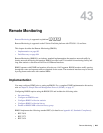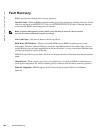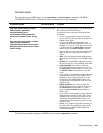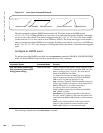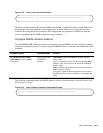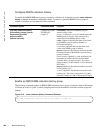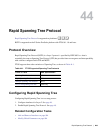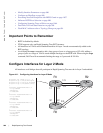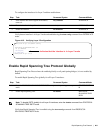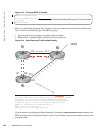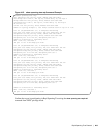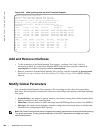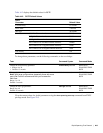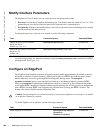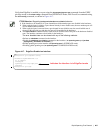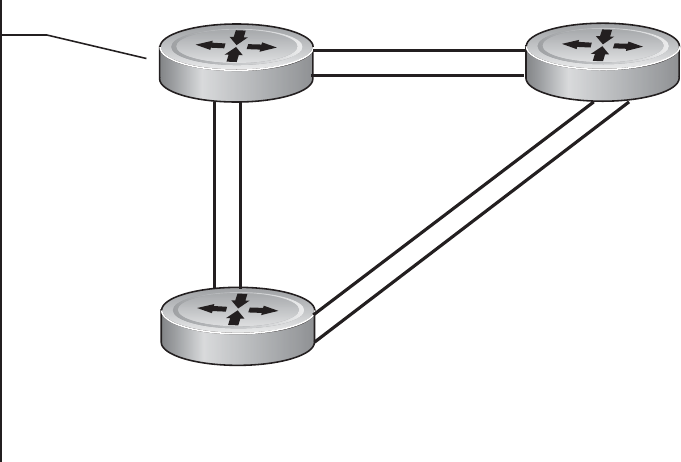
900 | Rapid Spanning Tree Protocol
www.dell.com | support.dell.com
• Modify Interface Parameters on page 906
• Configure an EdgePort on page 906
• Preventing Network Disruptions with BPDU Guard on page 1057
• Influence RSTP Root Selection on page 908
• Configuring Spanning Trees as Hitless on page 1064
• Fast Hellos for Link State Detection on page 909
• Flush MAC Addresses after a Topology Change on page 654
Important Points to Remember
• RSTP is disabled by default.
• FTOS supports only one Rapid Spanning Tree (RST) instance.
• All interfaces in VLANs and all enabled interfaces in Layer 2 mode are automatically added to the
RST topology.
• Avoid using the
range command to add a large group of ports to a large group of VLANs; adding a
group of ports to a range of VLANs sends multiple messages to the RSTP task. When using the
range
command, Dell Force10 recommends limiting the range to 5 ports and 40 VLANs.
Configure Interfaces for Layer 2 Mode
All interfaces on all bridges that will participate in Rapid Spanning Tree must be in Layer 2 and enabled.
Figure 44-1. Configuring Interfaces for Layer 2 Mode
R1
R2
R3
1/3
3/1
3/2
3/4
3/3
1/4
1/1 1/2
2/1
2/2
2/3
2
/4
R1(conf)# int range gi 1/1 - 4
R1(conf-if-gi-1/1-4)# switchport
R1(conf-if-gi-1/1-4)# no shutdown
R1(conf-if-gi-1/1-4)#show config
!
interface GigabitEthernet 1/1
no ip address
switchport
no shutdown
!
interface GigabitEthernet 1/2
no ip address
switchport
no shutdown
!
interface GigabitEthernet 1/3
no ip address
switchport
no shutdown
!
interface GigabitEthernet 1/4
no ip address
switchport
no shutdown




